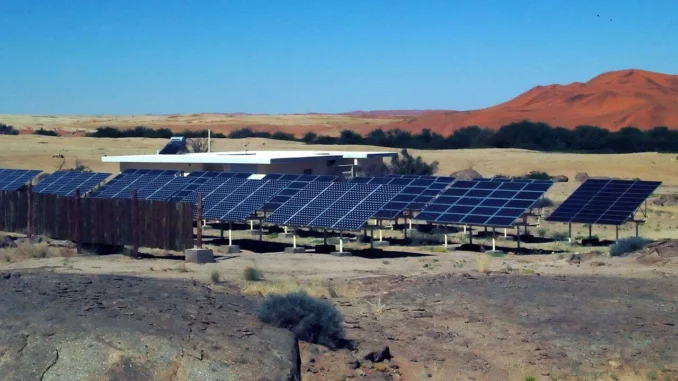
Namibia, a semi-desert African country among the most affected by global warming, has stated its ambition to become an industrial country self-sufficient in solar energy and even an exporter by 2030, while helping Europe to decarbonize via the production of hydrogen and ammonia.
Namibia has “the ambition to become an incubator of a synthetic fuel industry” by starting to produce solar energy, then green hydrogen, and decarbonized ammonia, explained James Mnyupe, economic adviser to the Namibian presidency who presented the country’s strategy in Paris on Wednesday.
The Namibian officials came to Europe to “propose their so extraordinary sun”, added Mr. Mnyupe during a meeting in Rotterdam on May 9th during the World Hydrogen exhibition where the Namibian government was also present.
The southern African country is in line with the energy objectives presented Wednesday by the European Union to free itself from Russian gas.
While the EU plans to produce 10 million tons of hydrogen from renewable sources by 2030, it also relies on 10 million tons of imports to replace coal, oil and gas in some sectors of industry and transport.
“The EU understands that it cannot produce 20 million tons of hydrogen in Europe, it is impossible, we do not have enough sun and not enough wind, which is why our first partner is Africa,” said Jorgo Chatzimarkakis, secretary-general of the European trade association Hydrogen Europe from Rotterdam.
The EU is counting on the “EU-Africa hydrogen partnership” to reduce its use of gas and decarbonize its industrial activities, starting with the major ports where natural gas-consuming activities are concentrated (steel industry, chemicals, etc.).
For its part, Namibia has launched operations, selecting last November the operators of its future first solar electricity production unit: the Hyphen consortium composed of an international investment fund (Nicholas Holdings) and the German energy group Enertrag, which should produce some 5,000 MW from 2026 in Tsau Khaeb.
The equation on which the country is based is simple: the solar electricity produced on the spot will be used, via an electrolyzer, to break molecules of water (whose symbol is H20) of desalinated sea to produce hydrogen (H) known as green, because of renewable electricity.
This hydrogen will then be mixed with nitrogen (N) contained in its natural state in the air to produce ammonia (NH3), which can be used as fuel for some large ships under development, or to manufacture agricultural fertilizers, or simply to facilitate the transport of hydrogen “to Rotterdam, Germany or South Africa” according to Mr. Mnyupe.
